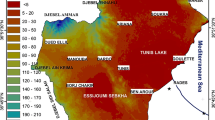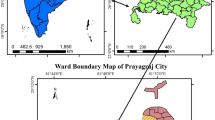Abstract
As a generalization to hesitant fuzzy linguistic term set (HFLTS), double hierarchy hesitant fuzzy linguistic term set (DHHFLTS) is presented which circumvents the weakness of HFLTS in representing complex linguistic terms. DHHFLTS has two linguistic hierarchies with the second hierarchy supplementing the primary which enables decision-makers (DMs) to represent complex linguistic terms better. Motivated by the power of DHHFLTS, in this paper, a new decision framework is presented under DHHFLTS context. Initially, a new aggregation operator called double hierarchy hesitant fuzzy hybrid aggregation (DHHFHA) operator is proposed for sensible aggregation of DMs’ preference information. Further, weights of attributes are calculated by extending statistical variance (SV) method under DHHFLTS context. Objects are prioritized by extending the popular WASPAS (weighted aggregated sum product assessment) method to DHHFLTS context. The applicability and usefulness of the proposed framework are realized by demonstrating a risk management technique (RMT) selection problem for a construction project. Finally, the superiority and weakness of the proposed framework are discussed by comparison with other methods.





Similar content being viewed by others
References
Triantaphyllou, E., Shu, B.: Multi-criteria decision making: an operations research approach. Encycl. Electr. Electron. Eng. 15, 175–186 (1998)
Zadeh, L.A.: The concept of a linguistic variable and its application to approximate reasoning-I. Inf. Sci. 8, 199–249 (1975)
Herrera, F., Herrera-Viedma, E.: Linguistic decision analysis: steps for solving decision problems under linguistic information. Fuzzy Sets Syst. 115, 67–82 (2000)
Herrera, F., Herrera-Viedma, E., Verdegay, J.L.: Linguistic measures based on fuzzy coincidence for reaching consensus in group decision making. Int. J. Approx. Reason. 16, 309–334 (1997)
Herrera, F., Herrera-Viedma, E., Verdegay, J.L.: A rational consensus model in group decision making using linguistic assessments. Fuzzy Sets Syst. 88, 31–49 (1997)
Rodriguez, R.M., Martinez, L., Herrera, F.: Hesitant fuzzy linguistic term sets for decision making. IEEE Trans. Fuzzy Syst. 20, 109–119 (2012)
Herrera, F., Herrera-Viedma, E., Verdegay, J.L.: A sequential selection process in group decision making with a linguistic assessment approach. Inf. Sci. 239, 223–239 (1995)
Torra, V.: Hesitant fuzzy sets. Int. J. Intell. Syst. 25, 529–539 (2010)
Liao, H., Xu, Z., Herrera-Viedma, E., Herrera, F.: Hesitant fuzzy linguistic term set and its application in decision making: a state-of-the-art survey. Int. J. Fuzzy Syst. 20, 2084–2110 (2017)
Gou, X., Liao, H., Xu, Z., Herrera, F.: Double hierarchy hesitant fuzzy linguistic term set and MULTIMOORA method: a case of study to evaluate the implementation status of haze controlling measures. Inf. Fusion. 38, 22–34 (2017)
Pang, Q., Wang, H., Xu, Z.: Probabilistic linguistic term sets in multi-attribute group decision making. Inf. Sci. 369, 128–143 (2016)
Wang, J.H., Hao, J.: A new version of 2-tuple fuzzy linguistic representation model for computing with words. IEEE Trans. Fuzzy Syst. 14, 435–445 (2006)
Tang, Y., Zheng, J.: Linguistic modelling based on semantic similarity relation among linguistic labels. Fuzzy Sets Syst. 157, 1662–1673 (2006)
Meng, F., Chen, X., Zhang, Q.: Multi-attribute decision analysis under a linguistic hesitant fuzzy environment. Inf. Sci. 267, 287–305 (2014)
Xu, Z.: Uncertain linguistic aggregation operators based approach to multiple attribute group decision making under uncertain linguistic environment. Inf. Sci. 168, 171–184 (2004)
Wang, H., Xu, Z., Zeng, X.J.: Modeling complex linguistic expressions in qualitative decision making: an overview. Knowledge-Based Syst. 144, 174–187 (2018)
Rodríguez, R.M., Labella, A., Martínez, L.: An overview on fuzzy modelling of complex linguistic preferences in decision making. Int. J. Comput. Intell. Syst. 9, 81–94 (2016)
Montserrat-Adell, J., Xu, Z., Gou, X., Agell, N.: Free double hierarchy hesitant fuzzy linguistic term sets: an application on ranking alternatives in GDM. Inf. Fusion. 47, 45–59 (2018)
Gou, X., Xu, Z., Herrera, F.: Consensus reaching process for large-scale group decision making with double hierarchy hesitant fuzzy linguistic preference relations. Knowledge-Based Syst. 157, 20–33 (2018)
Muirhead, R.F.: Some methods applicable to identities and inequalities of symmetric algebraic functions of n letters. Proc. Edinburgh Math. Soc. 21, 144–162 (1902)
Liu, P., Teng, F.: Some Muirhead mean operators for probabilistic linguistic term sets and their applications to multiple attribute decision-making. Appl. Soft Comput. 68, 396–431 (2018). https://doi.org/10.1016/j.asoc.2018.03.027
Kao, C.: Weight determination for consistently ranking alternatives in multiple criteria decision analysis. Appl. Math. Model. 34, 1779–1787 (2010)
Rao, R.V., Patel, B.K., Parnichkun, M.: Industrial robot selection using a novel decision making method considering objective and subjective preferences. Rob. Auton. Syst. 59, 367–375 (2011)
Mardani, A., Nilashi, M., Zakuan, N., Loganathan, N., Soheilirad, S., Saman, M.Z.M., et al.: A systematic review and meta-analysis of SWARA and WASPAS methods: theory and applications with recent fuzzy developments. Appl. Soft Comput. 57, 265–292 (2017)
Singh, S., Olugu, E.U., Musa, S.N., Mahat, A.B., Wong, K.Y.: Strategy selection for sustainable manufacturing with integrated AHP-VIKOR method under interval-valued fuzzy environment. Int. J. Adv. Manuf. Technol. 84, 547–563 (2016)
Büyüközkan, G., Görener, A.: evaluation of product development partners using an integrated AHP-VIKOR model. Kybernetes 44, 220–237 (2015)
Zhang, Y., Wang, Y., Wang, J.: Objective attributes weights determining based on shannon information entropy in hesitant fuzzy multiple attribute decision making. Math. Probl. Eng. 2014, 1–7 (2014)
Hafezalkotob, A., Hafezalkotob, A.: Fuzzy entropy-weighted MULTIMOORA method for materials selection. J. Intell. Fuzzy Syst. 31, 1211–1226 (2016). https://doi.org/10.3233/IFS-162186
Chýna, V., Kuncová, M., Sekni, J.: Estimation of weights in multi-criteria decision-making optimization models. In: Proceedings of 30th International Conference Mathematical Methods in Economics, 2013: pp. 355–360
Xu, Z., Zhang, X.: Hesitant fuzzy multi-attribute decision making based on TOPSIS with incomplete weight information. Knowledge-Based Syst. 52, 53–64 (2013)
Liu, S., Chan, F.T.S., Ran, W.: Decision making for the selection of cloud vendor: an improved approach under group decision-making with integrated weights and objective/subjective attributes. Expert Syst. Appl. 55, 37–47 (2016)
Chakraborty, S., Zavadskas, E.K.: Applications of WASPAS method in manufacturing decision making. Informatica. 25, 1–20 (2014)
Chatterjee, K., Zavadskas, E.K., Tamošaitiene, J., Adhikary, K., Kar, S.: A hybrid MCDM technique for risk management in construction projects. Symmetry. 10, 1–31 (2018)
Lyons, T., Skitmore, M.: Project risk management in the Queensland engineering construction industry: a survey. Int. J. Proj. Manag. 22, 51–61 (2004)
Lima Jr., F.R., Osiro, L., Carpinetti, L.C.R.: A comparison between fuzzy AHP and fuzzy TOPSIS methods to supplier selection. Appl. Soft Comput. 21, 194–209 (2014)
Gou, X., Xu, Z., Liao, H., Herrera, F.: Multiple criteria decision making based on distance and similarity measures under double hierarchy hesitant fuzzy linguistic environment. Comput. Ind. Eng. 126, 516–530 (2018)
Saaty, T.L., Ozdemir, M.S.: Why the magic number seven plus or minus two. Math. Comput. Model. 38, 233–244 (2003)
Spearman, C.: The proof and measurement of association between two things. Am. J. Psychol. 15, 72–101 (1904)
Chen, J., Li, S., Ma, S., Wang, X.: M-Polar fuzzy sets: an extension of bipolar fuzzy sets. Sci. World J. 2014, 1–8 (2014)
Deng, S., Liu, J., Wang, X.: The properties of fuzzy tensor and its application in multiple attribute group decision making. IEEE Trans. Fuzzy Syst. (2018). https://doi.org/10.1109/TFUZZ.2018.2865923
Yager, R.R.: Generalized orthopair fuzzy sets. IEEE Trans. Fuzzy Syst. 25, 1222–1230 (2017)
Acknowledgement
Authors dedicate their earnest gratitude to the editor and the anonymous reviewers for their valuable comments that helped us improve the quality of the paper.
Funding
Authors thank University Grants Commission (UGC), India, and Department of Science & Technology (DST), India, for their financial support from Grant Nos. F./2015-17/RGNF-2015-17-TAM-83 and SR/FST/ETI-349/2013.
Author information
Authors and Affiliations
Corresponding author
Ethics declarations
Conflict of interest
All authors of this research paper declare that there is no conflict of interest.
Ethical approval
This article does not contain any studies with human participants or animals performed by any of the authors.
Informed consent
Informed consent was obtained from all participants included in the study.
Rights and permissions
About this article
Cite this article
Krishankumar, R., Subrajaa, L.S., Ravichandran, K.S. et al. A Framework for Multi-Attribute Group Decision-Making Using Double Hierarchy Hesitant Fuzzy Linguistic Term Set. Int. J. Fuzzy Syst. 21, 1130–1143 (2019). https://doi.org/10.1007/s40815-019-00618-w
Received:
Revised:
Accepted:
Published:
Issue Date:
DOI: https://doi.org/10.1007/s40815-019-00618-w




